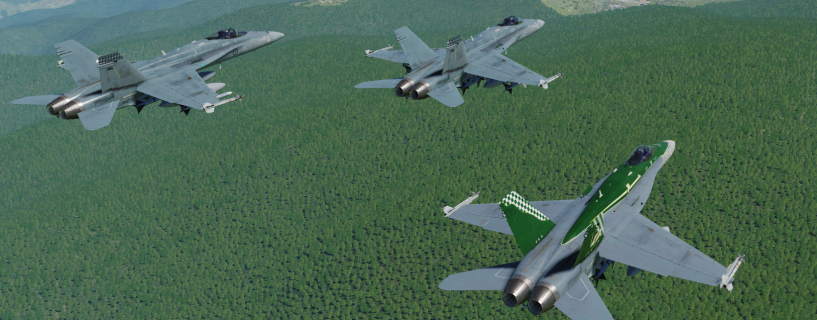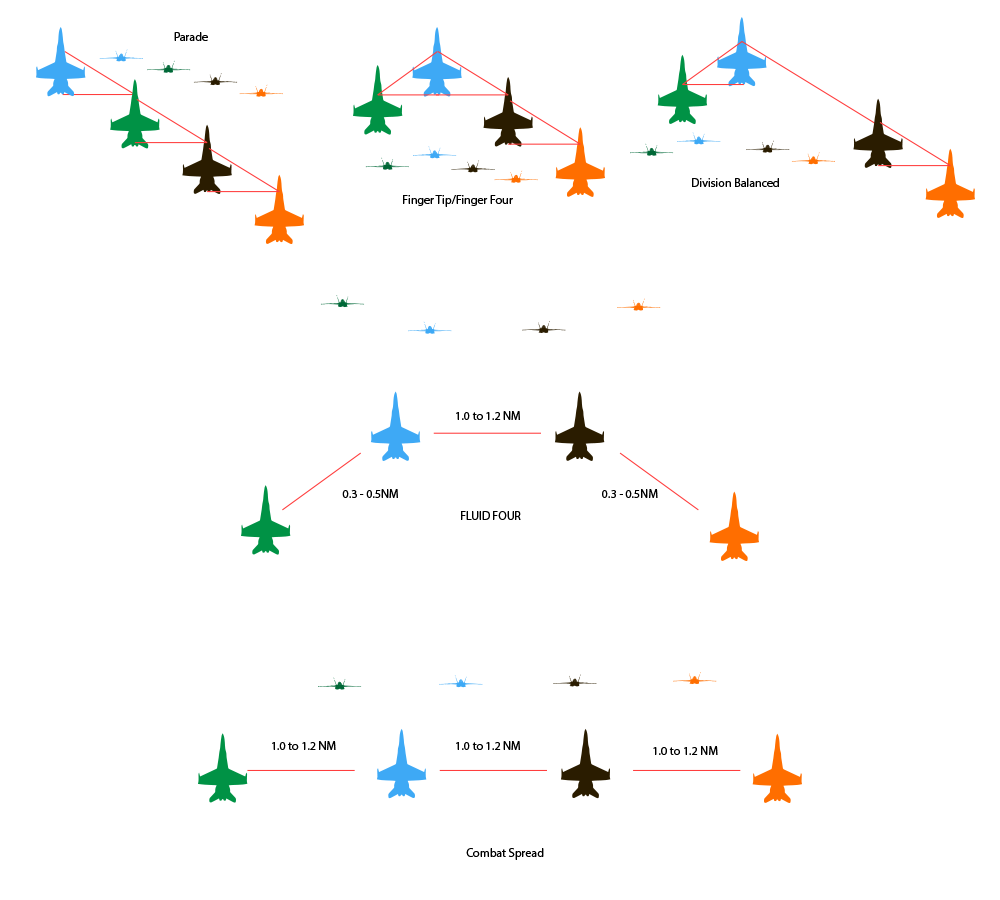
Nov 29
Rob
- Formation flights are always either 1 or 2 element flights.
- Flight lead is responsible for all communications with outside agencies, navigation and other ‘high’ level items.
- If Flight Lead is shot down and the formation is a 2 element (3 or 4 ship) flight then Element 2’s flight lead (Aircraft #3) becomes the formations flight lead.
- During non-combat operations standard formation for navigation is en-route loose or combat spread.
- If wing goes blind on lead at any point the call of ‘Blind’ should be transmitted immediately, followed by current heading, altitude and bulls-eye position if available.
- In the event of a wing man going blind during IMC conditions wing should turn 15 degree’s off axis from lead’s last known heading, maintain altitude for 1 minute. and carry out procedures in 5.
- Non-combat turns will be 3g 60 degree bank turns unless otherwise noted.
- Non-Combat turns will be called as ‘Direction Reference’ eg: Left Reference 220′
- The following formation terms are used for formation geometry:
- Parade – consists of echelon left, right or Finger Tip/Finger four with spacing either ‘tight’ or ‘loose’ a tight Parade has jets as close as possible, while loose is considered a maximum separation of .1 – .2 nm.
- En-route – consists of a Cone based echelon with units spaced roughly .5nm apart, each member of the flight can move as required within the cone formed behind lead.
- Balanced – lead and 2 fly in ‘tight’ echelon formation while element 2 do the same, however 3 is spaced .5 – 1nm separated from lead.
- Fluid 4 – Lead and 3 fly line abreast at 1 – 1.2 nm separation while 2 and 4 fly echelon formation at .3 – .5 nm
- Combat Spread – All units fly line abreast with .7 – 1.2 nm spacing.






